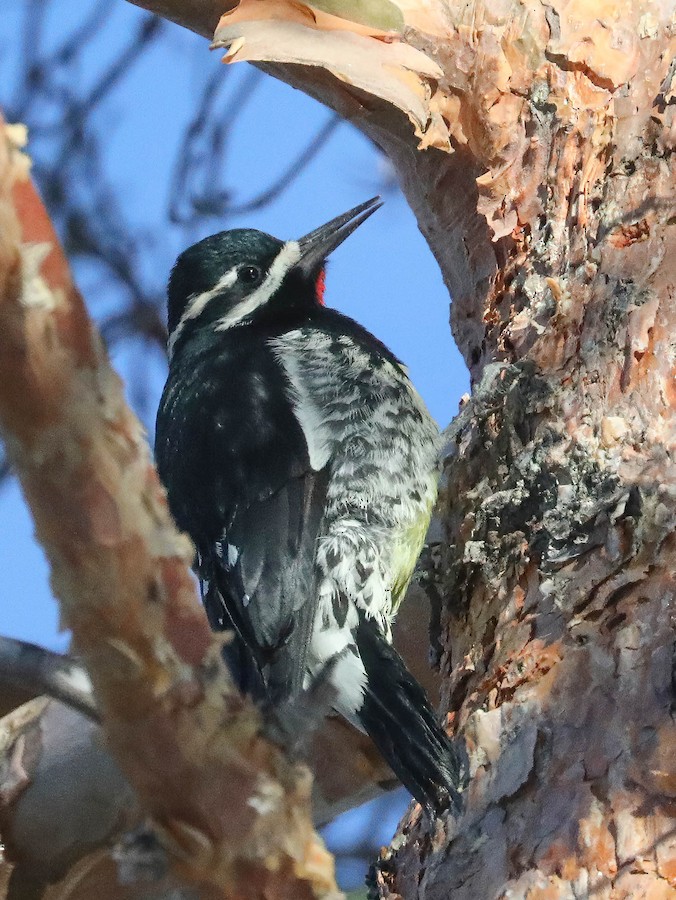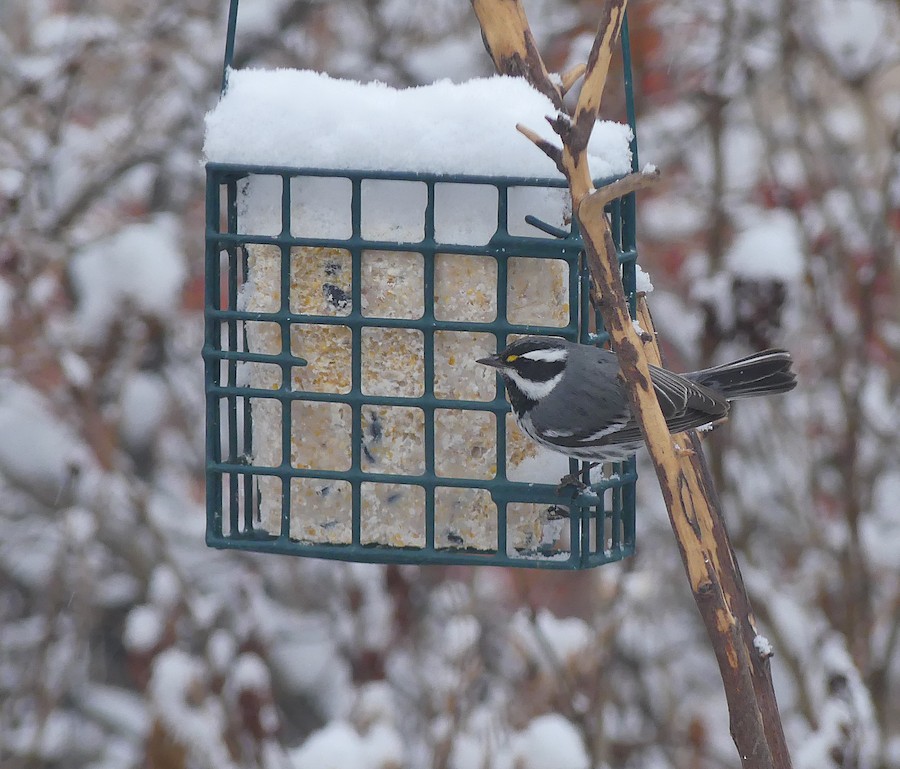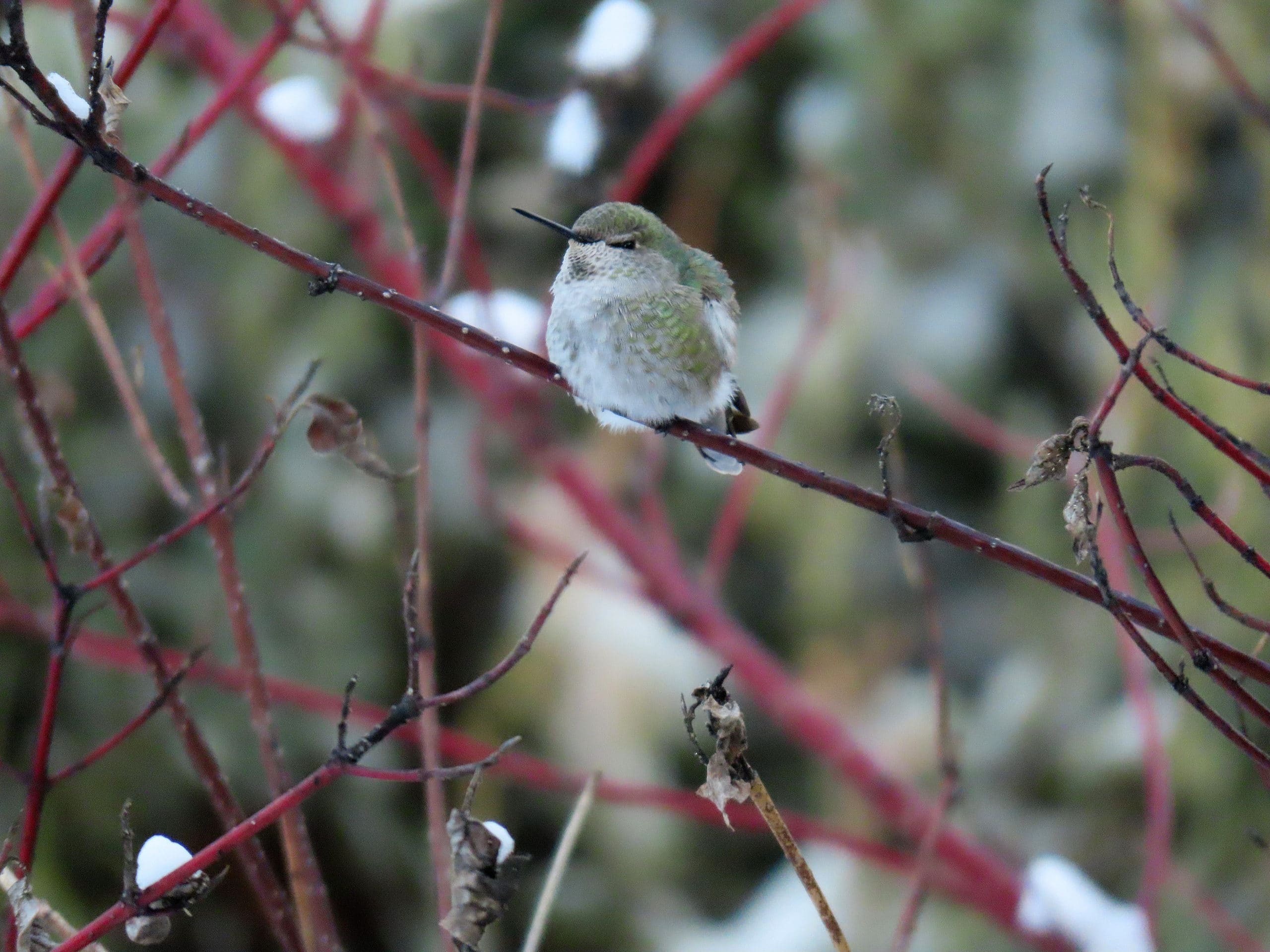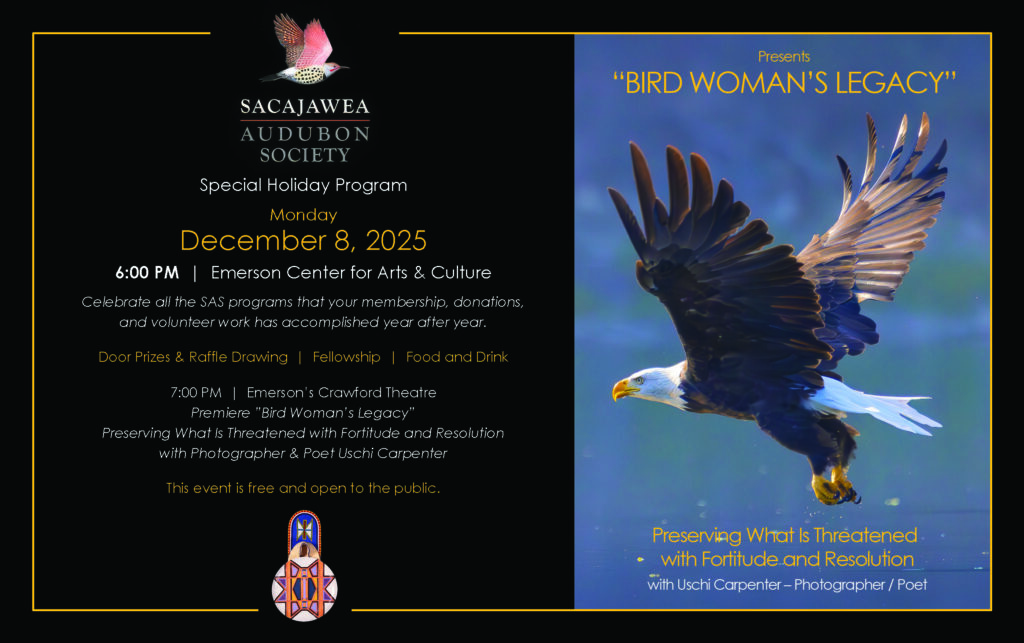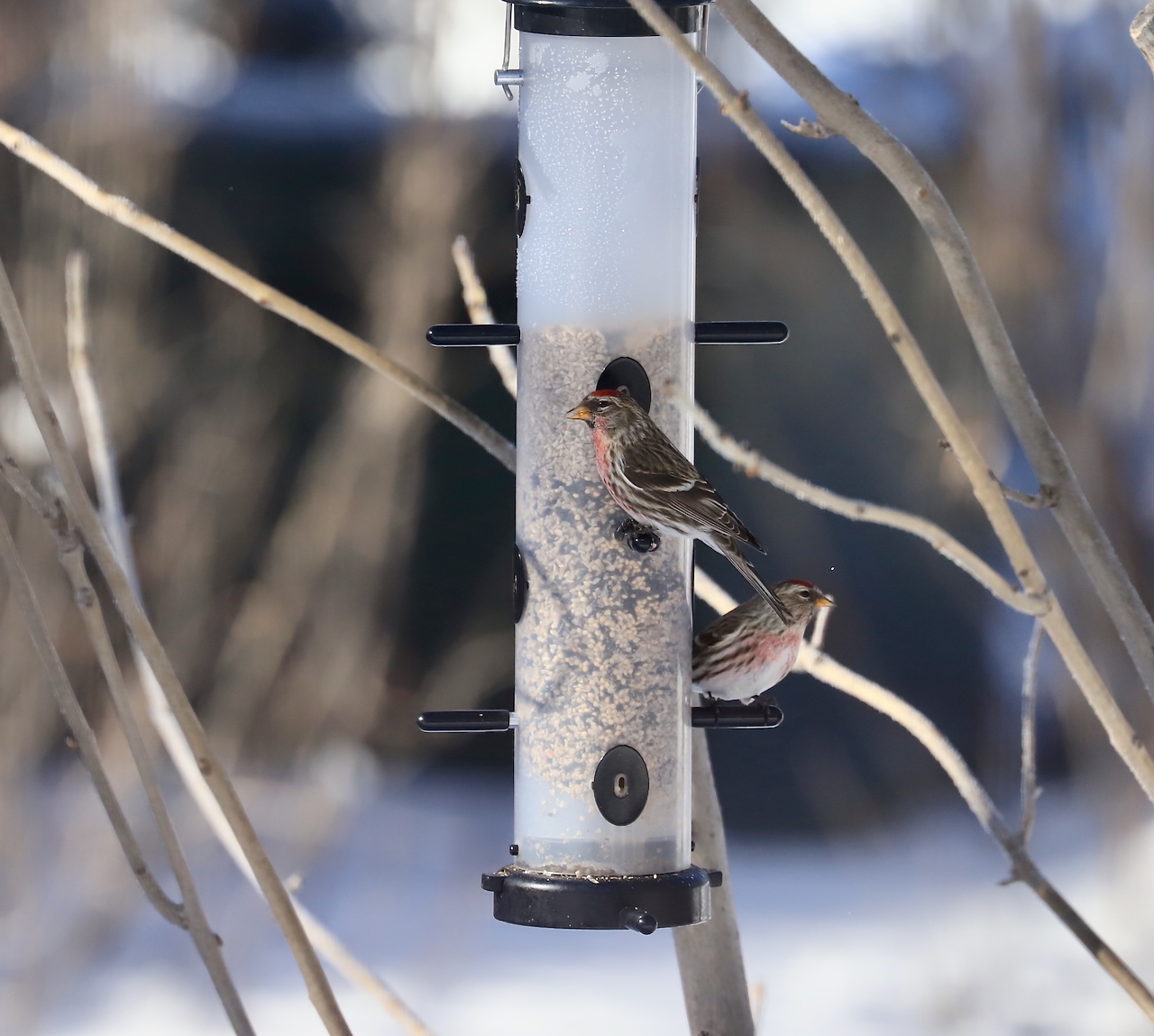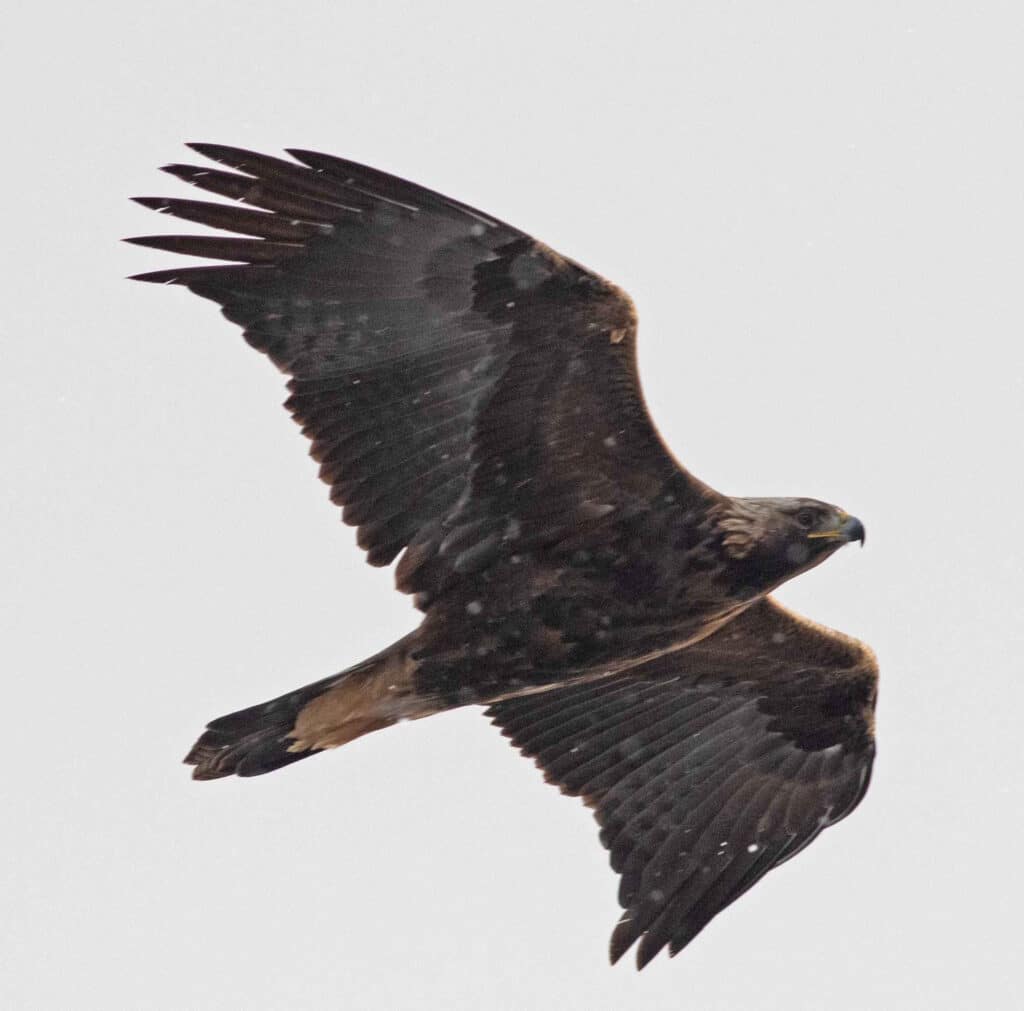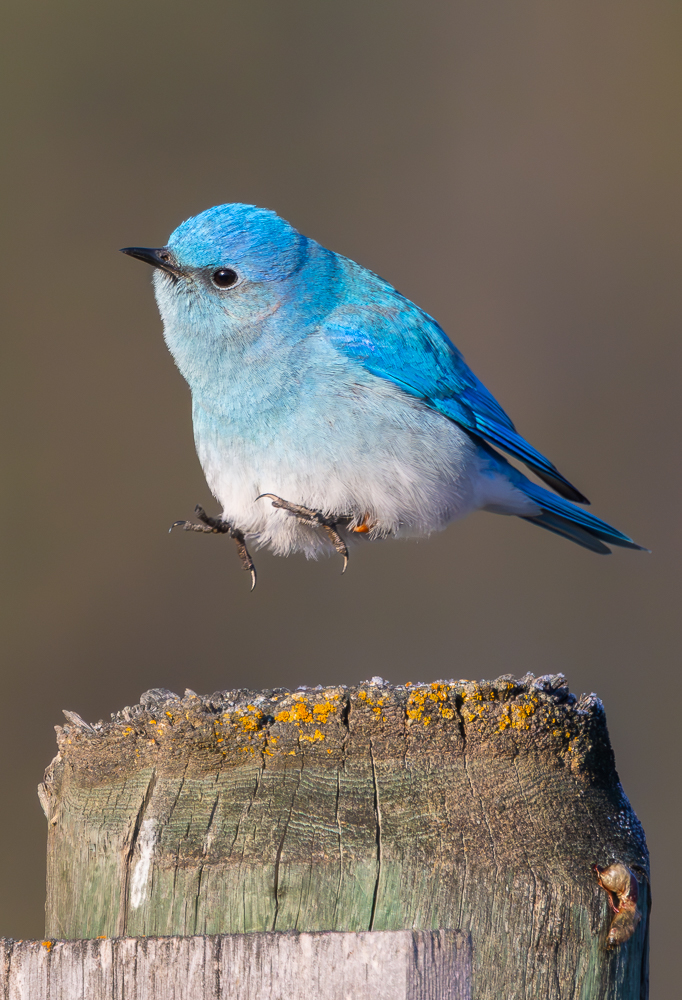by John Parker
It was an exceptional year for most of this area’s Christmas Bird Counts. Most of the Christmas counts had a high number of bird species, and a great many unusual winter birds were discovered on the various counts. The extremely warm fall and early winter was the primary factor contributing to the high counts and seasonal rarities. The warm weather allowed all the streams and rivers to remain open and keep most lower elevation areas free of snow. Some of the lakes and ponds even had open water, which rarely occurs to the extent that was the case this past year.
The Bozeman count on December 14 was first on the calendar, and what a way to start the counts. On this very mild December day, 76 species of birds were tallied, which is two shy of the all-time record. Incredibly, after 86 years of counts three new species were added to the cumulative total, which now stands at 140. New to the count were Greater White-fronted Goose, Anna’s Hummingbird, and Williamson’s Sapsucker. Also of note were a Hermit Thrush seen for only the second time on the count, Snow Goose seen for the third time (13 birds, a new high count), and Sandhill Crane seen for the third time. In all eight species had all time high counts, including the 1,978 magpies seen on count day.
Next up was the Livingston count, on the following day. The Livingston count was one of the only two counts that experienced more difficult weather conditions. It was windy. Only 54 species of birds were spotted, down about 10 species from average. 8 Sandhill Cranes and a Northern Pygmy Owl were the highlights.
The December 18 Ennis count also experienced high winds, but the open water on the corners of Ennis Lake made up for some of the birds that may have been missed due to the wind. Three new species Cinnamon Teal, Horned Grebe, and Double-crested Cormorant were found along the fringes of the lake. There were new high counts for Snow Goose, Northern Shoveler, Gadwall, American Wigeon, Ring-necked Duck, Western Meadowlark, and Brewer’s Blackbird.
The West Yellowstone count on December 22, benefited from more open water on Hebgen Lake than any previous count. New to the count this year were both Spotted Sandpiper and American White Pelican. Other uncommon birds on the count included Green-winged Teal, American Coot, and 8 Wilson’s Snipe.
The Gardiner/Yellowstone count was also done on December 22. This count had a new high species total of 44, which is about ten species higher than average. New to the count this year were Williamson’s Sapsucker and Black-throated Gray Warbler. New high counts were established for Common Merganser and Steller’s Jay.
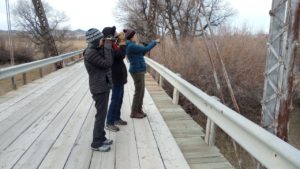
Three Forks takes the prize for the most new species added to the cumulative total. Must have been the weather, with warm temperatures and little wind, except for the windy Madison River Valley. New to the count were American White Pelican (3), Steller’s Jay, Ruby-crowned Kinglet, and Mountain Bluebird. All the new birds were found by the Headwaters team, except for the Steller’s Jay which was in the town of Three Forks.
The last count to be conducted, and the count with the most trying conditions, was the Ruby Valley count on January 4. The snow storm that day made finding birds difficult. They did have new high counts for Ferruginous Hawk (2), Northern Pygmy Owl (2) and Western Meadowlark.
Any one of the birds highlighted above would be an exciting find in Montana during the winter months, but three of these birds deserve special note for their rarity. The Anna’s Hummingbird seen near Gallatin Gateway is being sustained by a heated hummingbird feeder, otherwise it surely would have succumbed to the cold. This is a first winter record in this area for Anna’s Hummingbird. The two Williamson’s Sapsuckers are the first and second winter records for the northern Rockies! The Williamson’s Sapsucker on the Bozeman count was first seen south of town by Byron Butler on December 11, and was last seen on December 18. The other Williamson’s Sapsucker was seen only once on count day by John Cataldo in lower Mammoth, Wyoming. And finally, the bird of the season, a Black-throated Gray Warbler. The warbler was first seen on December 9, coming to Katy Duffy and Howard Weinberg’s feeders in Gardiner. This warbler is the first recorded anywhere in the inter-mountain West during the winter months. Meal worms and suet are the foods of choice for this lost insectivore. And for the cherry on top, the Black-throated Gray Warbler was joined by a Yellow-rumped Warbler on January 9!
